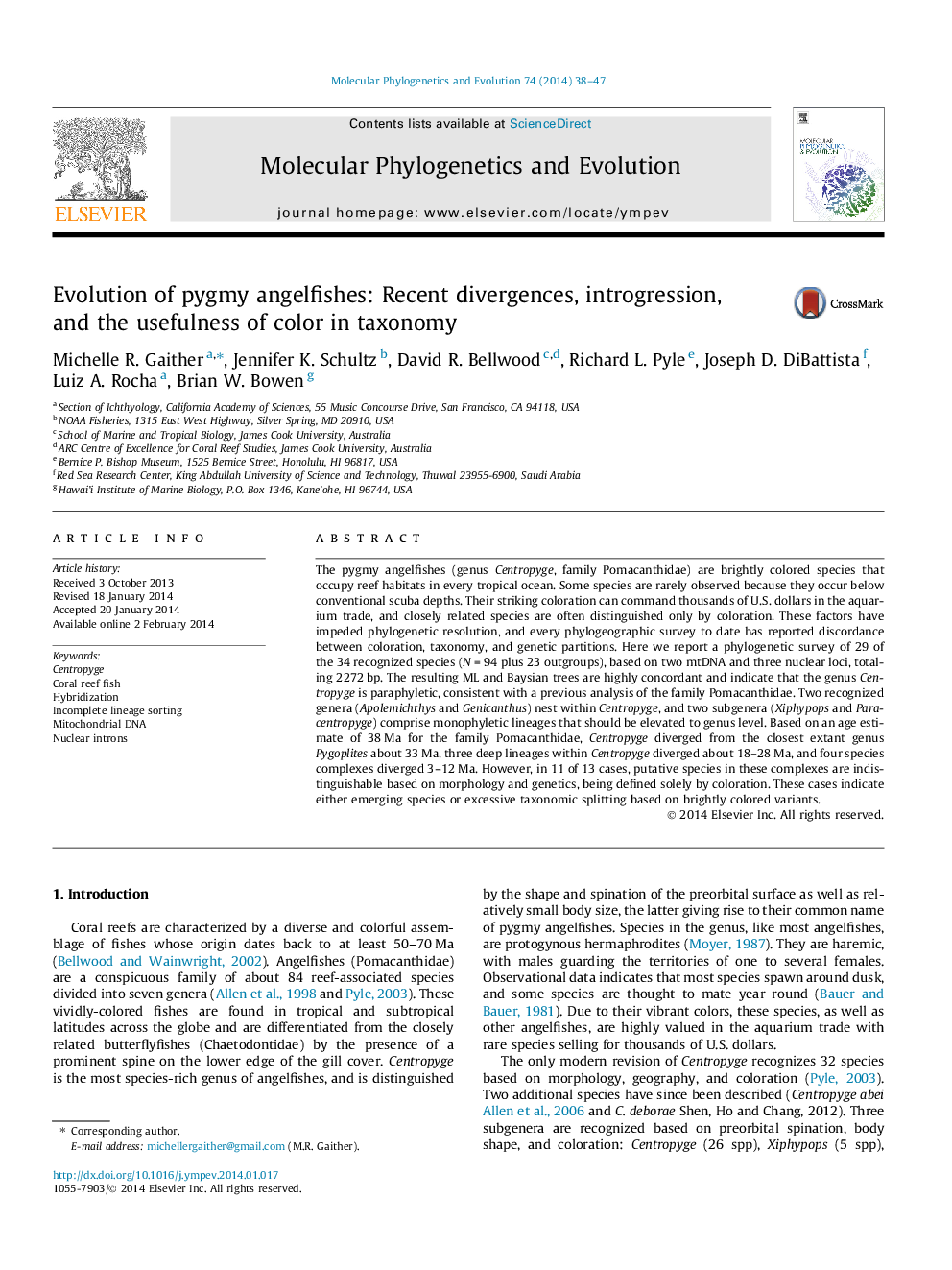| Article ID | Journal | Published Year | Pages | File Type |
|---|---|---|---|---|
| 2833848 | Molecular Phylogenetics and Evolution | 2014 | 10 Pages |
•Centropyge is a paraphyletic group of reef fishes with Apolemichthys and Genicanthus nesting within the genus.•The group dates to the mid-Oligocene.•The two subgenera Xiphypops and Paracentropyge comprise deep monophyletic lineages that should be elevated to genus level.•There are four species complexes within the group that date to between 3 and 12 Ma.
The pygmy angelfishes (genus Centropyge, family Pomacanthidae) are brightly colored species that occupy reef habitats in every tropical ocean. Some species are rarely observed because they occur below conventional scuba depths. Their striking coloration can command thousands of U.S. dollars in the aquarium trade, and closely related species are often distinguished only by coloration. These factors have impeded phylogenetic resolution, and every phylogeographic survey to date has reported discordance between coloration, taxonomy, and genetic partitions. Here we report a phylogenetic survey of 29 of the 34 recognized species (N = 94 plus 23 outgroups), based on two mtDNA and three nuclear loci, totaling 2272 bp. The resulting ML and Baysian trees are highly concordant and indicate that the genus Centropyge is paraphyletic, consistent with a previous analysis of the family Pomacanthidae. Two recognized genera (Apolemichthys and Genicanthus) nest within Centropyge, and two subgenera (Xiphypops and Paracentropyge) comprise monophyletic lineages that should be elevated to genus level. Based on an age estimate of 38 Ma for the family Pomacanthidae, Centropyge diverged from the closest extant genus Pygoplites about 33 Ma, three deep lineages within Centropyge diverged about 18–28 Ma, and four species complexes diverged 3–12 Ma. However, in 11 of 13 cases, putative species in these complexes are indistinguishable based on morphology and genetics, being defined solely by coloration. These cases indicate either emerging species or excessive taxonomic splitting based on brightly colored variants.
Graphical abstractFigure optionsDownload full-size imageDownload as PowerPoint slide
